Do you have a question about the Vespa GTS 125 and is the answer not in the manual?
Failure to observe instructions results in serious risk of personal injury.
Sections marked indicate correct vehicle use to prevent environmental damage.
Non-observance leads to vehicle damage and warranty invalidity.
Overview of dashboard controls, gauges, and warning lights.
Details on the clock display, key switch positions, and antitheft device.
Instructions for locking/unlocking steering and operating turn signals.
Operation of the horn button and headlight/tail light switch.
Controls for starting/stopping engine and how the immobilizer works.
Information on master keys, standard keys, code card, and their importance.
How the immobilizer works, indicator light, and key programming.
Procedures for accessing the fuel tank and opening the saddle.
Locating chassis/engine numbers and warnings against alteration.
Essential checks before riding and safe refuelling procedures.
Guidance on checking tyre pressure and adjusting rear shock absorbers.
Instructions for engine break-in and safe starting methods.
Important precautions for engine use, and how to stop the engine.
How to use the vehicle's stands and operate the automatic transmission.
Tips for safe riding, including helmet use and handling different conditions.
Information on using the rear luggage rack and its load limits.
Explanation and procedure for checking and topping up engine oil.
Detailed steps for changing engine oil and the oil filter.
Procedure for checking the oil level in the rear hub.
Guidelines for checking tyre pressure, wear indicators, and replacement.
Instructions for removing, checking, and replacing the spark plug.
Step-by-step guide for removing, cleaning, and refitting the air filter.
Procedures for checking coolant and brake fluid levels.
Accessing, maintaining, and caring for the vehicle battery.
Information on fuse locations and warnings for replacement.
Removing headlight assembly and adjusting the headlight beam.
Replacing front indicator bulbs and accessing rear lighting units.
Instructions for adjusting mirrors and engine idle speed.
Notes on disc brakes and procedures for tire puncture repair.
Guidelines for storing the vehicle and proper cleaning methods.
Addresses issues like no fuel, dirty filters, or no spark from the plug.
Troubleshooting for low performance, high consumption, and suspension faults.
Diagnosing insufficient braking and automatic transmission problems.
Addresses causes of abnormal exhaust system noise.
Details on engine bore, stroke, capacity, compression, ignition, and spark plug.
Specs for valve clearance, dimensions, wheelbase, fuel supply, exhaust.
Details on lubrication, cooling systems, transmission, and brakes.
Specifications for wheels, tyres, suspension, and chassis.
Vehicle weight, fuel/oil capacities, and included tool kit.
Safety, performance, and warranty advice regarding vehicle accessories.
Warnings on speed limits with accessories and anti-theft device handling.
Importance of maintenance, owner responsibilities, and fault reporting.
List of recommended lubricants, oils, and fluids with specifications.
Failure to observe instructions results in serious risk of personal injury.
Sections marked indicate correct vehicle use to prevent environmental damage.
Non-observance leads to vehicle damage and warranty invalidity.
Overview of dashboard controls, gauges, and warning lights.
Details on the clock display, key switch positions, and antitheft device.
Instructions for locking/unlocking steering and operating turn signals.
Operation of the horn button and headlight/tail light switch.
Controls for starting/stopping engine and how the immobilizer works.
Information on master keys, standard keys, code card, and their importance.
How the immobilizer works, indicator light, and key programming.
Procedures for accessing the fuel tank and opening the saddle.
Locating chassis/engine numbers and warnings against alteration.
Essential checks before riding and safe refuelling procedures.
Guidance on checking tyre pressure and adjusting rear shock absorbers.
Instructions for engine break-in and safe starting methods.
Important precautions for engine use, and how to stop the engine.
How to use the vehicle's stands and operate the automatic transmission.
Tips for safe riding, including helmet use and handling different conditions.
Information on using the rear luggage rack and its load limits.
Explanation and procedure for checking and topping up engine oil.
Detailed steps for changing engine oil and the oil filter.
Procedure for checking the oil level in the rear hub.
Guidelines for checking tyre pressure, wear indicators, and replacement.
Instructions for removing, checking, and replacing the spark plug.
Step-by-step guide for removing, cleaning, and refitting the air filter.
Procedures for checking coolant and brake fluid levels.
Accessing, maintaining, and caring for the vehicle battery.
Information on fuse locations and warnings for replacement.
Removing headlight assembly and adjusting the headlight beam.
Replacing front indicator bulbs and accessing rear lighting units.
Instructions for adjusting mirrors and engine idle speed.
Notes on disc brakes and procedures for tire puncture repair.
Guidelines for storing the vehicle and proper cleaning methods.
Addresses issues like no fuel, dirty filters, or no spark from the plug.
Troubleshooting for low performance, high consumption, and suspension faults.
Diagnosing insufficient braking and automatic transmission problems.
Addresses causes of abnormal exhaust system noise.
Details on engine bore, stroke, capacity, compression, ignition, and spark plug.
Specs for valve clearance, dimensions, wheelbase, fuel supply, exhaust.
Details on lubrication, cooling systems, transmission, and brakes.
Specifications for wheels, tyres, suspension, and chassis.
Vehicle weight, fuel/oil capacities, and included tool kit.
Safety, performance, and warranty advice regarding vehicle accessories.
Warnings on speed limits with accessories and anti-theft device handling.
Importance of maintenance, owner responsibilities, and fault reporting.
List of recommended lubricants, oils, and fluids with specifications.
| Fuel System | Electronic injection |
|---|---|
| Transmission | CVT with torque server |
| Front Tire | 120/70 - 12" |
| Rear Tire | 130/70 - 12" |
| Length | 1, 950 mm |
| Width | 755 mm |
| Seat Height | 790 mm |
| Engine Type | Single-cylinder, 4-stroke |
| Max Power | 10.3 kW at 8, 750 rpm |
| Torque | 12 Nm @ 6, 750 rpm |
| Cooling System | Liquid-cooled |
| Front Suspension | Single arm with coil spring and hydraulic shock absorber |
| Front Brake | Hydraulic disc, Ø 220 mm |
| Fuel Tank Capacity | 7 liters |
| Rear Suspension | Double hydraulic shock absorber with adjustable preload |
| Rear Brake | Hydraulic disc, Ø 220 mm |





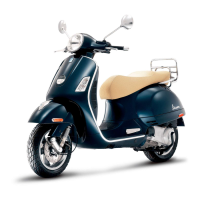
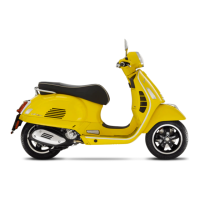
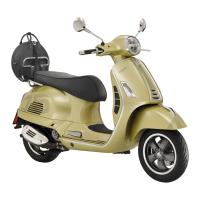

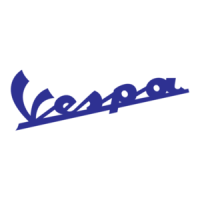

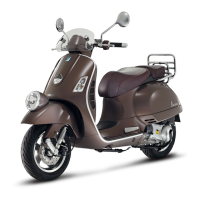
